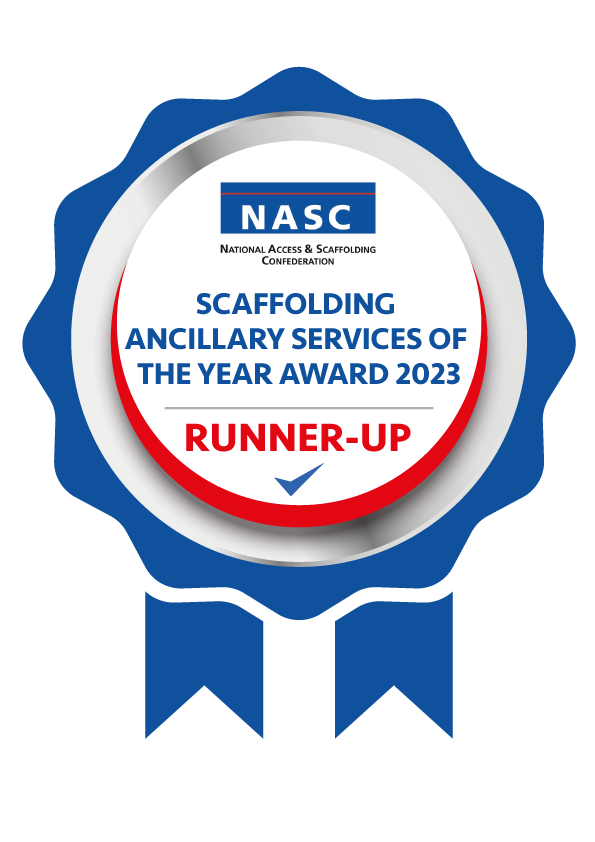Battling the Elements: How to Keep Your Scaffolds Safe in Adverse Weather
In the Scaffolding Industry we’re no strangers to working in unpredictable British weather. While scaffolding is designed to withstand various elements, adverse weather can introduce significant risks if not properly managed. Understanding how weather conditions impact your scaffolds is crucial for maintaining safety on-site and avoiding accidents. Let’s break down how different weather conditions can affect your work and how you can stay ahead of potential hazards.

The Impact of Wind, Rain, and Snow on Scaffolding
Wind is one of the biggest concerns when it comes to scaffolding safety. High winds, particularly those above 23mph (Force 5 on the Beaufort scale), can destabilize scaffolds, making them unsafe to work on. The push-pull effect of wind can cause structural sway, risking the safety of workers and increasing the chance of materials becoming loose or dislodged. It’s essential to secure any scaffolding materials not in use and ensure your scaffold is designed to resist strong winds. When wind speeds get intense, it’s safer to postpone work and avoid any unnecessary risks.
Rain can make scaffolding surfaces slippery, increasing the risk of falls. Water accumulation on platforms and corrosion of metal scaffolds are also concerns. Regular inspections should be conducted to ensure adequate drainage, and slip-resistant surfaces should be used where possible. Opting for galvanised steel or aluminium scaffolding can mitigate the risk of corrosion caused by rain.
Snow and ice can be especially hazardous. Not only do they make platforms slippery, but the added weight of snow can also strain the structure, leading to potential failure. Additionally, ice can obscure gaps in the scaffold structure, making it harder to detect potential risks. It’s vital to clear snow and ice regularly using safe methods like plastic shovels or scrapers to avoid damage to materials.
Plan for the Unexpected: Effective Risk Assessments
Good planning is half the battle when it comes to dealing with adverse weather. The NASC guidance SG46:24 emphasises the importance of risk assessments (RAs) before starting work, particularly in changing weather conditions. Make sure to carry out a thorough RA before setting up scaffolding, considering local weather patterns and historical data. Having a contingency plan in place can save time and keep workers safe, allowing for quick decision-making when the weather takes a turn for the worse.
Weather forecasts and wind monitoring tools, such as anemometers or using the Beaufort scale, are great resources to help you plan and make informed decisions. If bad weather is on the horizon, adjust your schedule to focus on tasks that are less weather-dependent, or temporarily halt work to avoid unnecessary risks.

Inspections: Don’t Skip Them
One of the most crucial things to remember is to inspect your scaffolds regularly, especially after bad weather like high winds or heavy snowfall. Under The Work at Height Regulations, scaffolds must be inspected:
- After installation and before first use.
- At least every seven days.
- After any event that might compromise the scaffold’s safety, such as adverse weather.
Keeping up with inspections ensures that any weather-related damage is identified and addressed immediately. But we know managing inspections across multiple scaffolds can feel like a juggling act, especially after a storm when several sites may need attention at once. This is where tools like the SMART Inspector app, part of SMART Manager software suite, can step in to help. It allows you to efficiently organise and track inspections, making sure no scaffold gets overlooked after a bout of bad weather. It’s an easy way to stay on top of safety and manage your scaffold requirements without the added headache.

A Few Final Tips to Keep Safe in Bad Weather
Here are a few quick-fire tips to stay safe when the weather turns bad:
- Wind: Secure materials and avoid working at height during high winds.
- Rain: Watch for slippery surfaces and ensure proper drainage on platforms.
- Snow/Ice: Regularly clear snow and ice from decking and roofs, and be cautious of hidden gaps in the structure.
- Lightning: Always stop work during thunderstorms. Metal scaffolds are prime conductors of electricity, making it dangerous to stay on site.
By staying proactive, conducting thorough inspections, and using tech tools like the SMART Inspector app, you can keep your team safe and ensure that your scaffolds remain sturdy and secure, no matter what the weather throws at you.
Remember, safety is everyone’s responsibility—if in doubt, always consult with your team or inspector to ensure you’re following best practices. Stay smart, stay safe!
Recent posts
Digital Detox for Scaffolders: Start the Year with a Cleaner, Faster SMART Scaffolder Setup
December’s Project of the Month: Hard Rock Scaffolding at Dutch Village.
November’s Project of the Month: WB Scaffolding at Smash Burger, Brighton.
Why Accurate Incident Reporting Matters: Staying Compliant with RIDDOR 2013
Why Tie Testing Matters: Staying Compliant with NASC TG4:25
October’s Project of the Month: Amphibian Scaffolding at Chartwell Hockley Industrial Centre
Why Harness Inspections Matter: Staying Compliant with NASC SG16:23
September’s Project of the Month: OAK Scaffolding Limited: Caterham School
Why the Scaffolding Industry Must Embrace Technology
August’s Project of the Month: SAY Access Limited at Appleton Academy
Sustainability Through Innovation in Construction:
Project of the Month: July – JRS Scaffolding
Case Study: Transforming Scaffold Inspections at Enigma Industrial Services
Bridging the Skills Gap in Scaffolding: How Technology Can Attract the Next Generation
Project of the Month – June – Blenheim Palace
SMART Scaffolder’s 20th Anniversary event
Engineering Smart Solutions in Tight Spaces: PJ Slater’s Stamford & Rutland Hospital Project
Why Every Scaffolding Company Needs a Strong GRC Framework –
Sonic Scaffolding 2000 ltd is driving Project Success with SMART Estimator’s Accurate 3D Planning
Infiniti Scaffolding LTD: Boosting Efficiency with SMART Inspector: A Success Story
Building Safer Heights: Tackling Falls with Better Scaffolding Practices
The Future of Scaffolding Workflow software
SCA Group’s Centenary Quays Project: Project of the Month January 2025
Navigating Scaffold Safety: The Critical Importance of Handover Certificates





